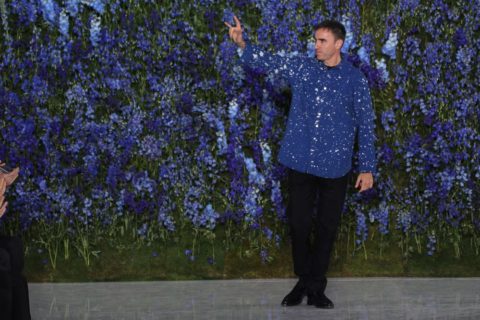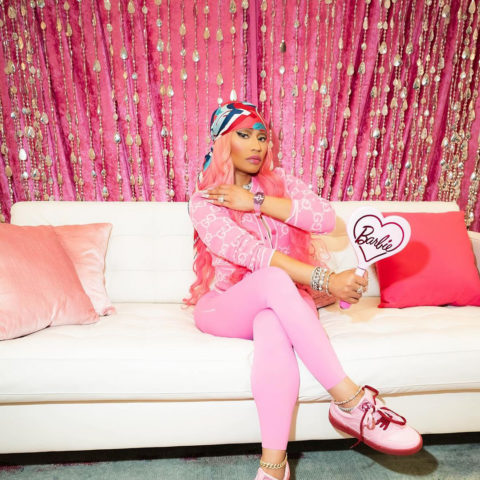What does Raf Simons leaving Dior say about the fashion industry?

By now, even those with only a passing interest in fashion have probably heard that Raf Simons is leaving Dior. After only three and a half years as the artistic director of the iconic French fashion house, Simons has cited a need “to focus on other interests in my life, including my own brand, and the passions that drive me outside my work,” as the reason for his departure.
This is just the most recent reshuffling of designers in the ever-quickening game of musical chairs being played at famous fashion houses in recent years. John Galliano was fired from Dior in 2011 for anti-Semitic comments. At his trial, Galliano’s lawyer blamed the racist remarks on “work-related stress and multiple addictions.” Galliano himself admitted in an interview with Vanity Fair that he used alcohol as a way to “crash” after shows.
Galliano’s workload at Dior had a hand in exacerbating his problems but there isn’t much that anyone at Dior could have done; after all, his bosses confronted him about his problems and told him to get help at least twice before his firing. You could argue that it’s not Dior. It is simply the way that the industry is. Few people can withstand the pressures and constraints of being a creative director at such a big fashion house—an issue that appears to be worsening.
Of course, most people don’t let it get to the point that Galliano did. Many simply reach an amicable agreement with the house to leave when their contract is up, citing various reasons. However, this is happening at a much more rapid pace than ever before. This year has seen both Raf Simons and Alexander Wang leaving their posts at Dior and Balenciaga, respectively, after a relatively short period of only about three years to focus on their own namesake brands.
Compare that to the longer reigns of other well-known creative directors. Karl Lagerfeld has been the creative director of Chanel for 32 years and Fendi for 50 years, as well as being at the helm of his own fashion house since 1974. Marc Jacobs was at Louis Vuitton for 17 years. Even Galliano was at Dior for 15 years before he self-destructed.
So where is the suddenly increasing turnover of creative directors coming from? There’s the obvious danger of becoming burnt-out and exhausted from the demands of so many shows per year, but that has always been the case. Now, however, creative directors must consider not only the image they want to project on the runway but they must also cultivate the brand’s image on social media and digital platforms. Plus they must do all this in the twin vacuums of the Internet and the fashion world–neither of which is known for a long attention span. One’s efforts must begin to feel disposable very quickly.
Simons himself shared his misgivings on the ever-increasing pace of the fashion world earlier this month. “I’m questioning a lot. I feel a lot of people are questioning. We have a lot of conversation about it: Where is it going? It’s not only the clothes. It’s the clothes, it’s everything, the Internet.” Simons also admitted that while it is technically feasible to produce the amount of designs for six shows at the frantic pace demanded by Dior, he missed the “incubation time for ideas.” With pre-fall, resort, menswear, fall, and spring shows, creative directors simply don’t have time to breathe.
So if they want to avoid having to find yet another new creative director two or three years down the line, who should Dior hire as Simons’ successor? A few likely contenders that have been named are Givenchy’s Riccardo Tisci and Celine’s Phoebe Philo. Regardless of how likely either choice is, the fact that both have been at their respective houses for fairly long should be of consideration for Dior. Tisci has been at Givenchy for ten years while Philo has been at Celine for twelve years total (with a two year break in between to spend time with her family). Dior desperately needs someone who is in it for the long haul.
Alternatively, Dior may go for someone who is relatively unknown, as Balenciaga did when they replaced Wang with Demna Gvasalia of Vetements or as Gucci did with Alessandro Michele. Both Gvasalia and Michele were surprising choices due to their relative obscurity in the fashion world, compared to an established heavyweight such as, say, Tisci or Philo. These may be seen as risky moves, but at the very least Michele has been creating a lot of buzz with his work for Gucci so far (and Gvasalia is sure to do the same for Balenciaga if the popularity of Vetements is any indication).
Dior can choose an established veteran who has proved their ability to dedicate themselves long-term or they can take a gamble on an unknown but intriguing ingenue. Either way, the hope is that they will find someone who can accomplish the tricky balancing act that is required of their creative director. There is the pressure to churn out six buzzy shows every year while adhering to the constraints of the brand’s “look,” as it is represented both on the runway and on the Internet. It’s no surprise that Simons and Wang left for the luxury of being able to have complete creative control with their own brands, not to mention more of a personal life.
Whether Dior chooses someone who can stay true to the classic Dior style or someone who will bring their own twist to it, as Michele has been doing at Gucci, remains to be seen. The important thing is that Dior finds someone who is able to keep up with the fashion world’s increasingly fast pace for more than just a few years, because it doesn’t seem to be slowing down anytime soon.







